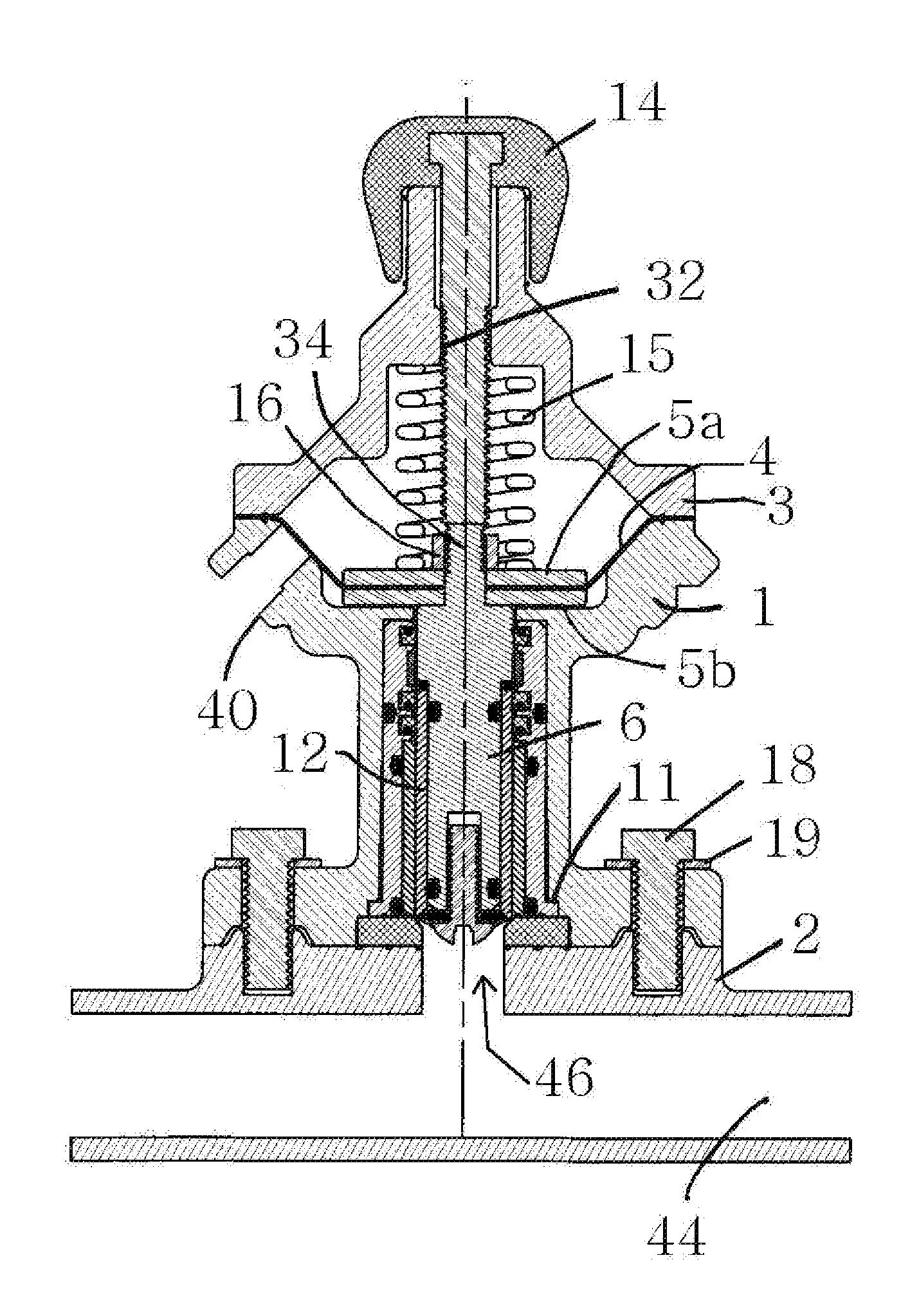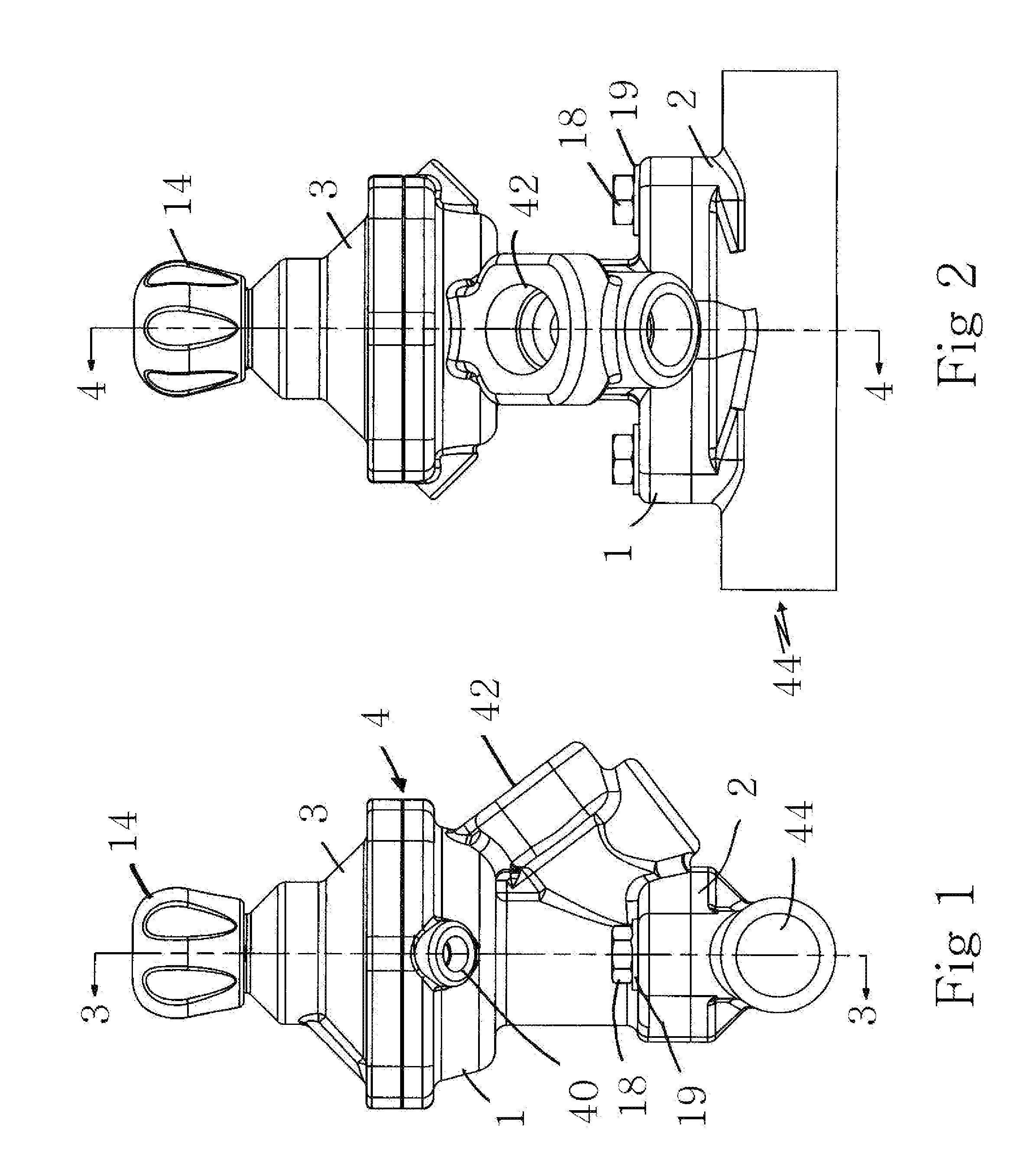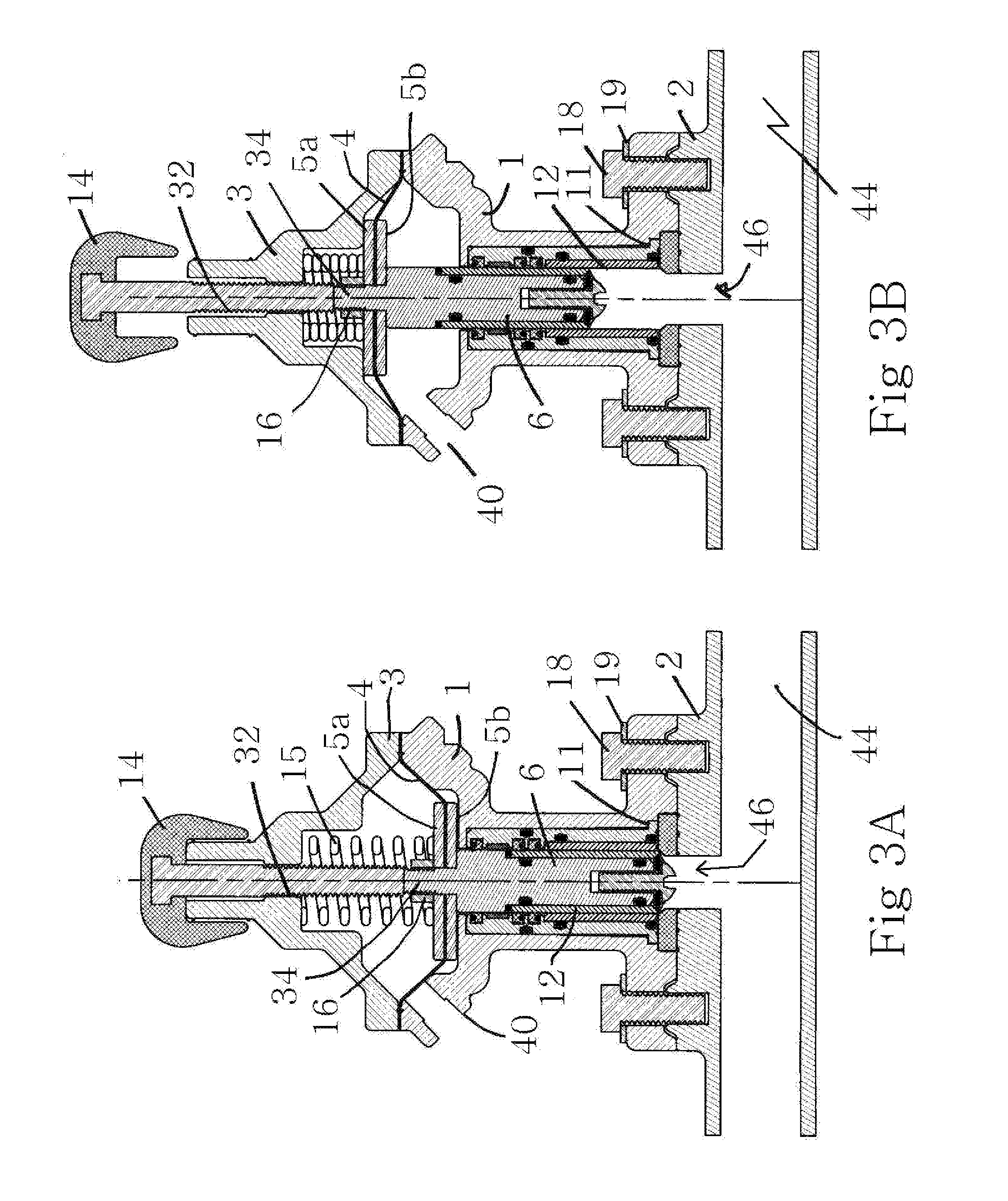Media Control Valve
a technology of control valve and media control, applied in the field of media control, can solve the problems of valves that cannot be used, valves that cannot be replaced or substantial repaired, and damage to valves beyond use, and achieve the effects of less sliding friction, less friction, and less friction
- Summary
- Abstract
- Description
- Claims
- Application Information
AI Technical Summary
Benefits of technology
Problems solved by technology
Method used
Image
Examples
Embodiment Construction
[0044]Referring initially to FIGS. 1, 2, 3A, 3B, 4A and 4B, the valve assembly includes a valve body 1 for housing the valve plunger assembly, the spool sleeve assembly and the lower diaphragm plate 5b (see, for example FIGS. 3A and 3B), as will be explained with reference to FIGS. 5-8. The valve cap assembly 3 is secured to the body 1 and houses the diaphragm 4 (best shown in FIGS. 4A and 4B), upper diaphragm plate 5a and the metering knob assembly terminating in the metering knob 14. The upper valve assembly, comprising the body 1, the cap assembly 3, knob assembly including knob 14 and the internal components are typically secured to the valve base 2 by a series of bolts or similar fasteners 18. Typically, a washer 19 is positioned between each bolt head and the valve body 1, as shown.
[0045]The pressurized indexing air or control fluid is introduced into port 40, as indexed or metered by the position of the metering knob assembly terminating in metering knob 14. Abrasive media is...
PUM
 Login to View More
Login to View More Abstract
Description
Claims
Application Information
 Login to View More
Login to View More - R&D
- Intellectual Property
- Life Sciences
- Materials
- Tech Scout
- Unparalleled Data Quality
- Higher Quality Content
- 60% Fewer Hallucinations
Browse by: Latest US Patents, China's latest patents, Technical Efficacy Thesaurus, Application Domain, Technology Topic, Popular Technical Reports.
© 2025 PatSnap. All rights reserved.Legal|Privacy policy|Modern Slavery Act Transparency Statement|Sitemap|About US| Contact US: help@patsnap.com



